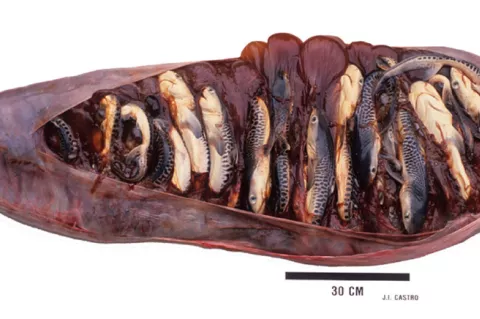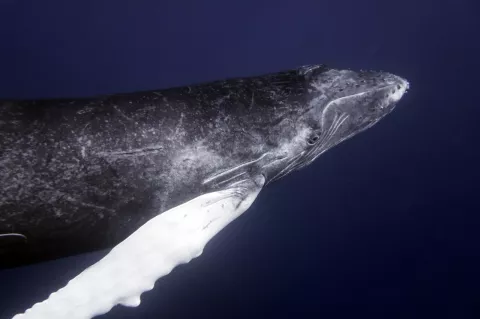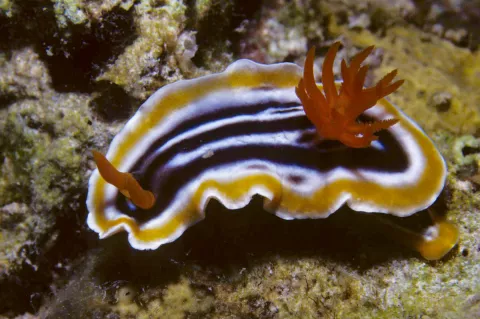New Strategy for Embryo Nourishment Found in the Tiger Shark
Drs. José I Castro, Keiichi Sato, and Ashby B. Bodine, have discovered a new method of embryonic nourishment in sharks. The tiger shark secretes a nutritive liquid which fills the egg sacs where the embryos are growing, permitting higher numbers of offspring to attain a large size. Their paper, entitled "A novel mode of embryonic nutrition in the tiger shark, (Galeocerdo cuvier)," has just been published in the journal Marine Biology Research.







